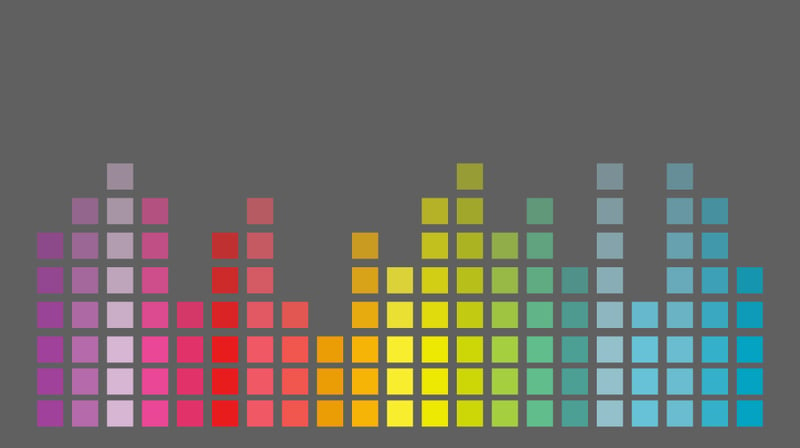Higher education is built upon data.
Much of our work as practitioners is to increase awareness and knowledge around inequities in higher education to better serve students, including the services, programs, and practices we offer.
Yet there seems to be little guidance on how to actually address inequities and make ourselves aware of gaps, in terms of support, that may exist. While we understand that data can send a clear message about student engagement and retention, we know data alone cannot catalyze change and it must be explained by a convincing story.
Here we highlight the utilization of inclusive data, how it can have a positive impact on students’ lives, and why it deserves attention.
What do we mean by inclusive data?
Apart from accurate data collection to determine the best support programs for students, we aim to help professionals collect data that will aid them in organizing strategies in more inclusive ways to benefit all members of a campus community.
The current baselines for collecting data about our students seem pretty basic, rigid and built using outdated templates from the US Census. Gathering a wider swath of data for specific demographics and expanding the number of demographics we prioritize in the first place will help us gain a better understanding of what’s actually happening on campus.
Often, when developing overarching campus goals, the institutional effectiveness goals aren’t integrated with strategic inclusion goals. It’s critical to understand that these two overarching goals aren’t mutually exclusive, and in fact, should be fully integrated in order to analyze the impact of equity, diversity, and inclusion work on campus.
The challenges of collecting data
Campuses collect an extraordinary amount of data from students throughout their time on campus. From their initial application to housing applications, engagement surveys, department-specific data, all the way through the alumni databases, there are a variety of tools and structures that exist that amass student information.
But difficulties arise when those databases don’t communicate effectively with each other, or when each database has different structures for data input. For example, some systems might only include two genders, whereas others might include a few options, while yet another will use gender in place of sex. This creates binaries where they don’t exist, and can inaccurately conflate different demographics, leading to less nuanced campus assessments.
Additionally, some professionals will not see collecting and organizing data as important. Exposing these professionals to new education, resources, discussions, and programming around best practices of inclusive environments will help them understand student and campus culture, and why it’s important to collect data around those identities.
Implementation for professionals
Implementing some of these changes often requires larger institutional or divisional changes, so it’s important to note that these changes will take time and cross-campus buy-in.
One of the first things to do is to identify your goals for data collection and directly link them back to any type of campus inclusion plan, or strategic plan goals your campus has related to Equity, Diversity, and Inclusion (EDI). If your campus has yet to make an inclusion plan or structure formal EDI goals, benchmark with a similar institutional type or student type and formulate initial steps based off of their plans.
For example, if there is not any data currently collected around transgender students, your campus will be leaving out a substantial population who may feel isolated because decisions are not made with their needs in mind. Further, if your campus doesn’t utilize a holistic identity lens when reviewing and analyzing data, it can be difficult to understand the nuanced challenges that are inhibiting student success.
Dive into this process with an understanding of the campus culture and how the representation of these demographics, or lack thereof, contributes to making decisions. Using a student engagement software that is focused on creating more inclusive environments can help alleviate the stress of demographic collection and reporting, and help streamline decisions around student retention and support.
Recommendations for success
It’s imperative that we can answer the question each year through evidence and data:
“What progress has been made in terms of EDI on our campus?”
The Association for American Colleges and Universities released a document called Committing to Equity and Inclusive Excellence: A Campus Guide for Self-Study and Planning in 2015 which guides campuses to take specific actions and helps educators engage in dialogue and institutional assessment to advance equity and inclusive excellence on campus.
Two of our favorite bullets from their recommendations section include:
1. Know who your students are, and will be
2. Make a commitment to dialogue about climate for underserved students
Additionally, they highlighted and explained why high levels of commitment are needed from all stakeholders, which will look different for each department and campus.
More recommendations on the topic of collecting data for an inclusive campus include:
- Set goals for each department to achieve inclusive excellence each semester or each year through effective data collection and partnering with departments
- Assess individual learning with the NASPA/ACPA competencies, specifically using the Social Justice and Inclusion framework through reflection and sharing among professionals
- Utilize a high level of confidentiality among professionals who handle, collect, or analyze data as to not to further isolate specific students or student groups
- Continuously develop a culture of evidence as to support student stories and/or combat our feelings of intuition when making critical decisions
- Focus on becoming a data-driven campus professional and working alongside others to lift them up and spread more knowledge about how data can be used to create a more inclusive campus environment
These types of data insights are crucial to our efforts and longevity as organizations. Inclusivity initiatives are the foundation and the standard for today’s institutional best practices and will guide us in creating effective multi-pronged strategies.
It’s important to remember this type of work does not happen overnight. All institutions need to start building capacity to collect data, work with each other on data interpretation, and offer a new lens to data analyses.
How do we raise the proverbial inclusive bar in the work that we do?
How do we start to layer the data to look at it through the lens of complex, layered identities?
How do we motivate all educators to address equity?
Tweet us @themoderncampus to continue the conversation. Thanks for reading!





